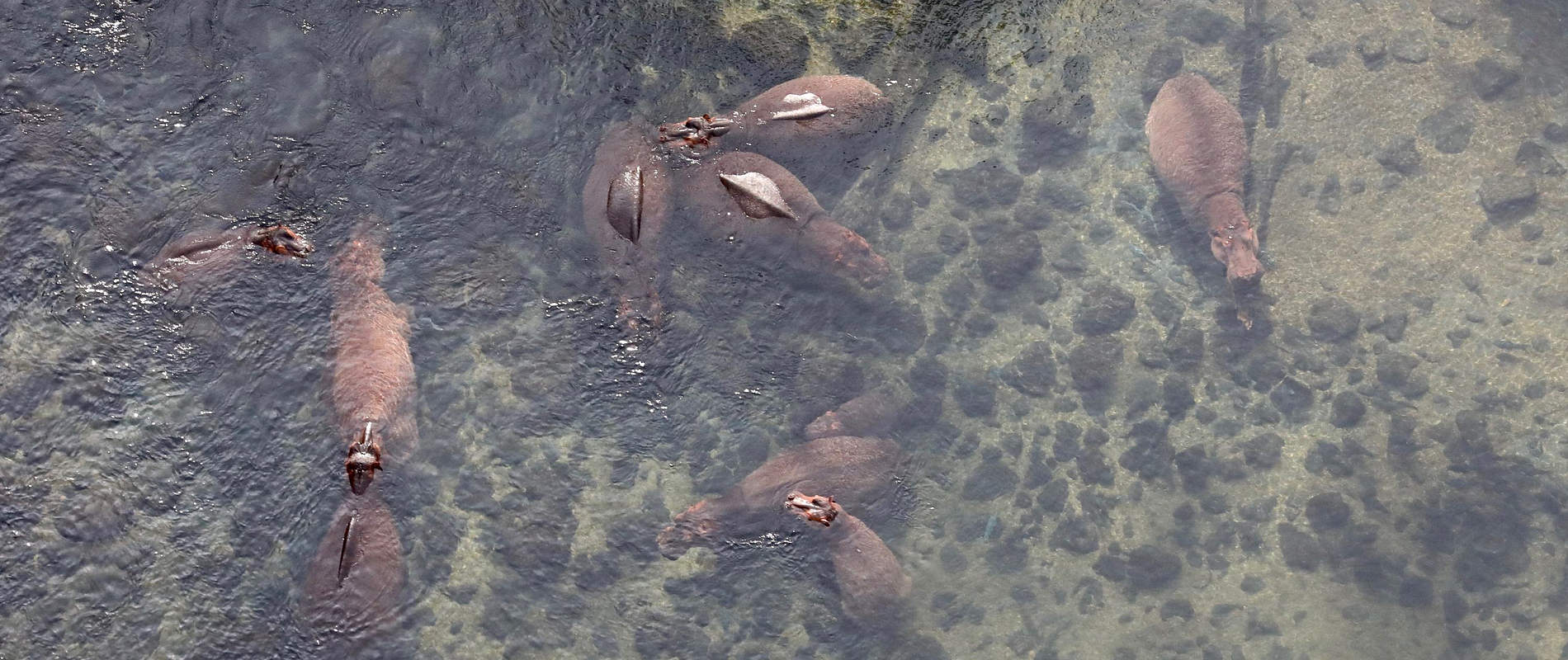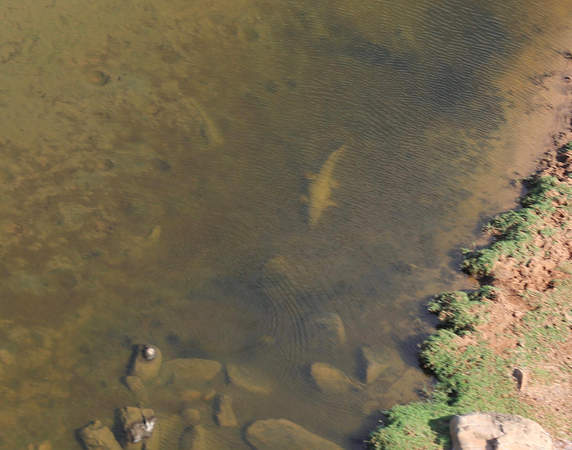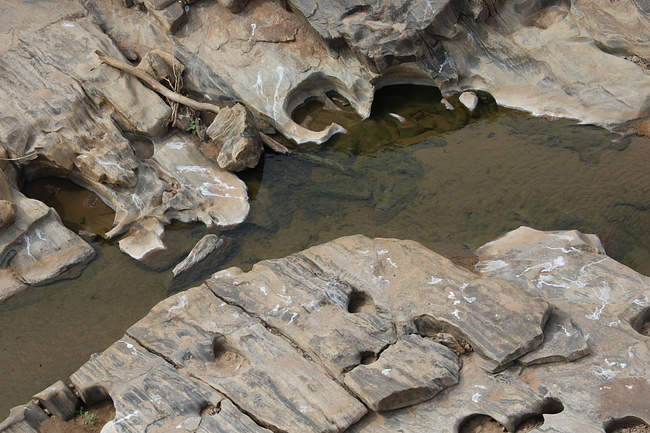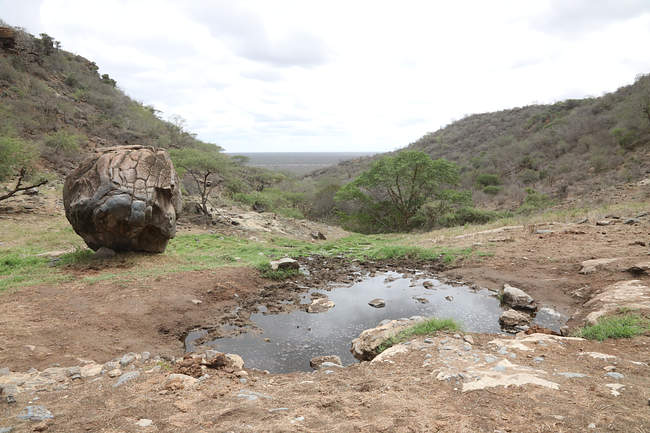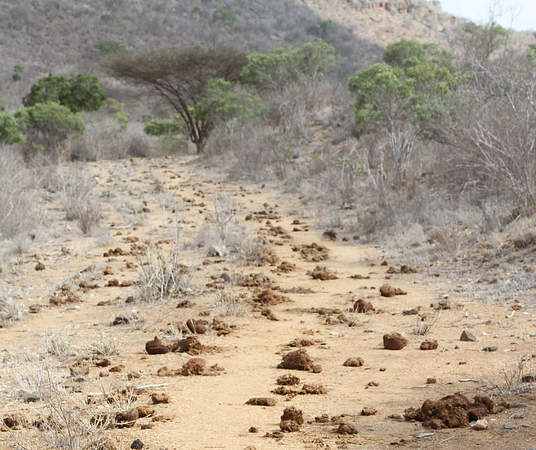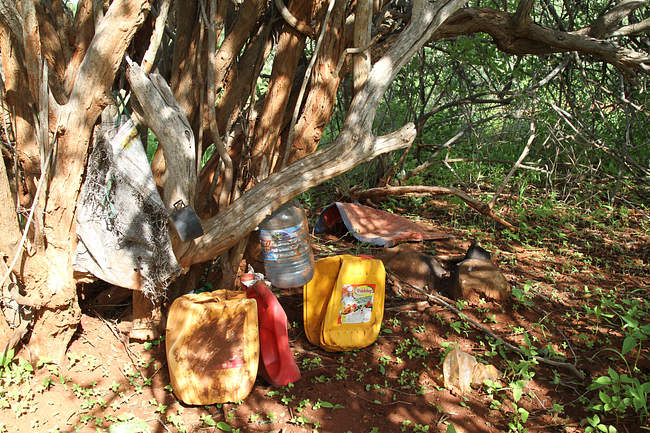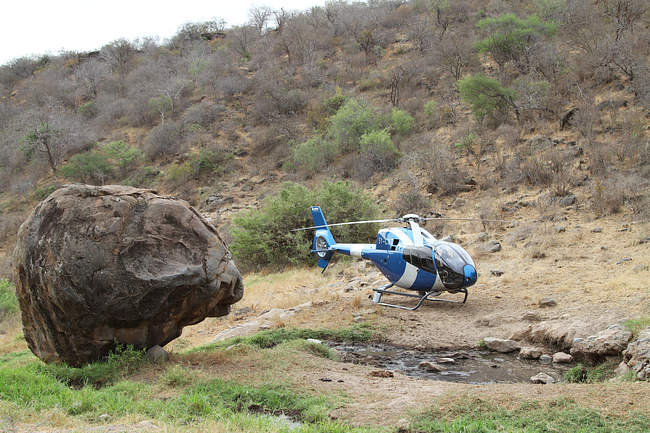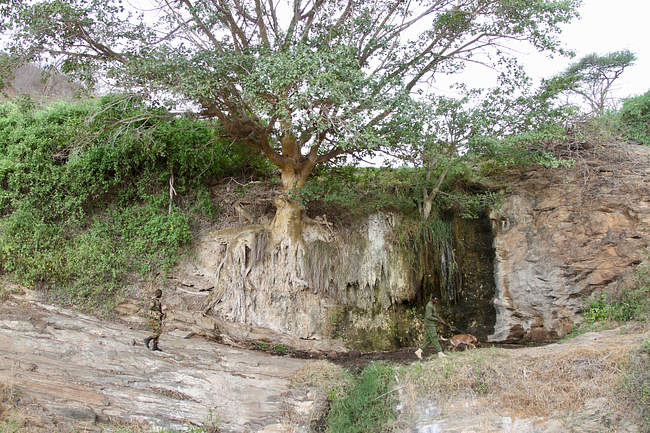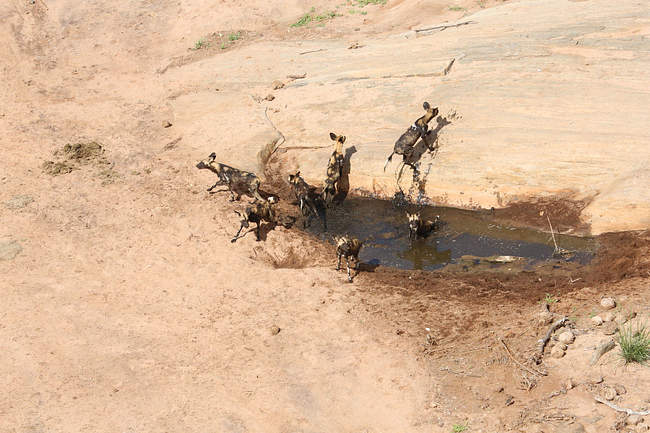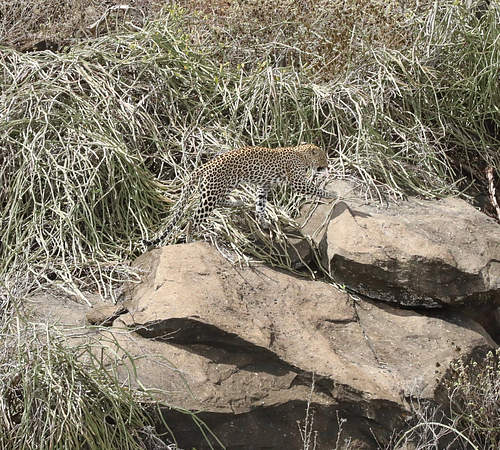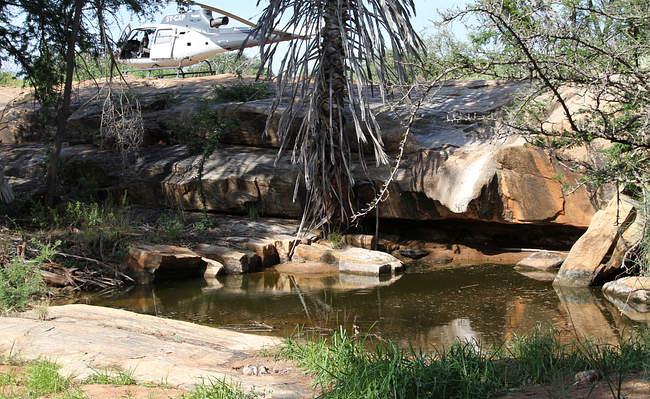The critical importance of water is perhaps no more evident than in Tsavo, a semi-arid environment and home to countless species of flora and fauna.
Water is everything in Tsavo. Two major rivers quench what was formerly referred to as the Taru Desert – the Athi-Galana and the Tsavo River. These arteries supply the lifeblood for the majority of wildlife in this baking, semi-arid environment. However, there are a number of other permanent or semi-permanent water sources, which provide an alternative for wildlife when the vegetation along the rivers begins to dwindle.
Apart from seasonal muddy waterholes, which swell during the rainy season, there are dozens of small springs, issuing crystal clear water. Some of these occur along dry riverbeds or luggas as they are known. Typically, water seeps down the lugga beneath the sand and is forced up where large metamorphic rocks cut across the riverbed. In some springs, water is able to pool up enough to support aquatic life such as fish and terrapins, even hippos and crocodiles in some cases, but in others the water is more a seepage, forming shallow muddy pools. The water generally has a very high salt content but nevertheless supports a wide array of adapted wildlife.
Perhaps the highest concentration of springs is along the edges of the Yatta Plateau. The Yatta was likely formed when a lava flow traced its way down an old river valley, originating near Ol Donyo Sabuk and terminating in modern-day Tsavo East. Softer rock and soil on either side of the lava flow eroded away, leaving a distinct plateau that stretches around 300 km and is as wide as 8km in places. The river presumably diverted to the West and became what is now the Athi River, which runs parallel to the Yatta for the majority of its journey. A small amount of water still flows under the lava tongue and occasionally leaks out on either side, forming a series of small springs.
On the Eastern side of the Yatta Plateau in Tsavo East, and South of the Tiva River, there are literally no other permanent water sources other than the Yatta springs. Well-worn elephant paths lead to these springs and then up and over the plateau to the other side. The plateau is otherwise an effective natural barrier preventing animals from easily accessing the river on the other side, so these springs allow wildlife to fan out and access vegetation that is otherwise only accessible during the rainy season when waterholes fill up.
Historically, the Yatta Plateau has also served as a route into the Park for poachers who can easily navigate along it. The poachers take advantage of the springs, not only for their own needs but also as places to target prey. SWT ground and aerial teams sometimes find small poachers’ camps near the springs and shooting blinds or platforms are sometimes found next to springs or beside paths leading up to them. Wildlife is funnelled off of small and discrete tracks and onto large elephant paths that snake their way up from the woodland below towards water points along the Yatta. A poacher can therefore be reasonably certain of encountering their quarry along these paths.
The good news is that with the advent of the SWT’s helicopters we are able to land and deploy rangers next to these springs, accessing many in a single day. Rangers can then quickly sweep the area around the pools, and check paths leading up to them, for signs of illegal activity. We have already observed a change in the poachers’ behaviour as a result. This has not necessarily translated into a marked reduction in illegal activity; however, life for the poacher has been made significantly more difficult. Rather than visiting the large, well-known springs, poachers are increasingly being forced to find smaller, less-trafficked springs in an attempt to evade capture. At these smaller springs, better described as trickles, their chances of success are dramatically reduced, added to which the Trust’s knowledge of this change in tactics means that the poachers are in fact no safer from detection than they were before.
The enhanced patrolling capability has made a noticeable difference in the amount of wildlife seen visiting these springs. Recent sightings at some of the waterholes have been buffalo, waterbuck, eland, and zebra. Unsurprisingly, carnivores have also been seen in greater numbers with recent sightings of leopard and lion and frequent occurrences of wild dog, an animal that until the last 3-5 years was relatively rare in Tsavo.
With persistent efforts on the ground, empowered by the SWT’s Airwing, we are confident that the health of these little mini ecosystems will continue to improve, along with the numbers of wildlife that benefit from them.
